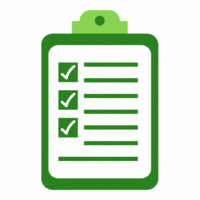Anak Berbakat (Jenius Atau Gifted Children)
DOI:
https://doi.org/10.35473/ijec.v4i1.996Keywords:
early childhood, genius, giftednessAbstract
Talent is an ability which is something that is inherent (has existed and is integrated) in a person, carried from birth and related to the structure of the brain. Other factors that play a role on intelligence are nutritional and neurological factors. Gifted children are described as children who have more potential than children of the same age in general. In general, there are two ways to identify gifted children, namely, gathering information in an objective way and gathering information that is subjective in nature. The characteristics of the genius / gifted children, namely children who have a high iq above the average iq in the population, namely> 130. This study aims to present the gifted children (genius or gifted children). This research was conducted by analyzing library research (Library Research). Based on the results of data analysis through literature study obtained from the compilation of data by carrying out a search of books, literature, notes, as well as various relevant information by showing that gifted children (geniuses or gifted children) should know as early as possible.References
Dea Souisa, dkk. (2001). Kreativitas, Bakat, dan Layanan Pendidikan Anak Berbakat.
Fitriana, D. (2015). Individu Berbakat (Giftedness): Tinjauan Psikologi Pendidikan. Jurnal Psikologi Islam : Al-Qalb, 5(1). https://doi.org/https://doi.org/10.15548/alqalb.v6i1.813
Inawati, A. (2017). Strategi Pengembangan Moral dan Nilai Agama Untuk Anak Usia Dini Asti Inawati. Jurnal Al-Athfal : Jurnal Pendidikan Anak, 3(1), 53. http://ejournal.uin-suka.ac.id/tarbiyah/alathfal
M. Sobry. (2010). Manajemen Program Akselerasi bagi Anak Berbakat. Sosio Religia, 9.
Nana Syaodih Sukmadinata. (2007). Landasan Psikologi Proses Pendidikan. Bandung: Rosda.
Reni Akbar Hawadi. (2006). Akselerasi, A-Z Informasi Program Percepatan Belajar dan Anak Berbakat Intelektual. Jakarta: Gramedia Widiasarana Indonesia.
Retno Kumolohadl. (1998). Tahap-tahap penting dalam penanganan anak jenius: Psikologika, 6(3). https://doi.org/https://doi.org/10.20885/psikologika.vol3.iss6.art3
Santrock, J. . (2011). Perkembangan Anak. Jakarta: Salemba Humanik.
Semiawan. (1997). Perspektif Pendidikan Anak Berbakat. Jakarta: Grasindo.
Semiawan & Djeniah Alim. (2002). Petunjuk Layanan dan Pembinaan Kecerdasan Anak. Bandung: Remaja Rosda karya.
Supriyadi. (2016). COMMUNITY OF PRACTITIONERS : SOLUSI ALTERNATIF BERBAGI PENGETAHUAN ANTAR PUSTAKAWAN. Jurnal Lentera Pustaka, 2(2), 83–93. https://doi.org/https://doi.org/10.14710/lenpust.v2i2.13476
Susilawati, N. (2020). Peranan Orang Tua Dalam Mengembangkan Potensi Anak Berbakat (Gifted). Jurnal Sikola: Jurnal Kajian Pendidikan Dan Pembelajaran, 2(2), 135–146. https://doi.org/10.24036/sikola.v2i2.102
Undang-undang Sisdiknas. (2003). Jakarta: Depdiknas.
Utami Munandar. (2021). kreativitas. jakarta;rineka cipta.
Wahab, R. (2016). Mengenal Anak Berbakat Akademik dan Upaya Mengidentifikasinya. 1–11. https://doi.org/https://dx.doi.org/10.21831/cp.v2i2.9176
Yumnah, S., Tinggi, S., Islam, A., & Bangil, P. (2016). Kecerdasan Anak Dalam Pengenalan Potensi Diri. Jurnal Studi Islam, 11(2).
Downloads
Published
How to Cite
Issue
Section
License
Copyright (c) 2023 Indonesian Journal of Early Childhood: Jurnal Dunia Anak Usia Dini

This work is licensed under a Creative Commons Attribution-ShareAlike 4.0 International License.
Please find the rights and licenses in Indonesian Journal Of Early Childhood: Jurnal Dunia Anak Usia DIni. By submitting the article/manuscript of the article, the author(s) agree with this policy. No specific document sign-off is required.
1. License
The non-commercial use of the article will be governed by the Creative Commons Attribution license as currently displayed on Creative Commons Attribution-ShareAlike 4.0 International License.
2. Author(s)' Warranties
The author warrants that the article is original, written by stated author(s), has not been published before, contains no unlawful statements, does not infringe the rights of others, is subject to copyright that is vested exclusively in the author and free of any third party rights, and that any necessary written permissions to quote from other sources have been obtained by the author(s).
3. User Rights
Indonesian Journal Of Early Childhood: Jurnal Dunia Anak Usia Dini's spirit is to disseminate articles published are as free as possible. Under the Creative Commons license, Indonesian Journal Of Early Childhood: Jurnal Dunia Anak Usia Dini permits users to copy, distribute, display, and perform the work for non-commercial purposes only. Users will also need to attribute authors and Indonesian Journal Of Early Childhood: Jurnal Dunia Anak Usia Dini on distributing works in the journal and other media of publications.
4. Co-Authorship
If the article was jointly prepared by more than one author, any authors submitting the manuscript warrants that he/she has been authorized by all co-authors to be agreed on this copyright and license notice (agreement) on their behalf, and agrees to inform his/her co-authors of the terms of this policy. Indonesian Journal Of Early Childhood: Jurnal Dunia Anak Usia Dini will not be held liable for anything that may arise due to the author(s) internal dispute. Indonesian Journal Of Early Childhood: Jurnal Dunia Anak Usia Dini will only communicate with the corresponding author.
5. Miscellaneous
Indonesian Journal Of Early Childhood: Jurnal Dunia Anak Usia Dini will publish the article (or have it published) in the journal if the article’s editorial process is successfully completed. Indonesian Journal Of Early Childhood: Jurnal Dunia Anak Usia Dini's editors may modify the article to a style of punctuation, spelling, capitalization, referencing and usage that deems appropriate. The author acknowledges that the article may be published so that it will be publicly accessible and such access will be free of charge for the readers as mentioned in point 3.
Â
Every accepted manuscript should be accompanied by "Copyright Transfer Agreement" prior to the article publication.



